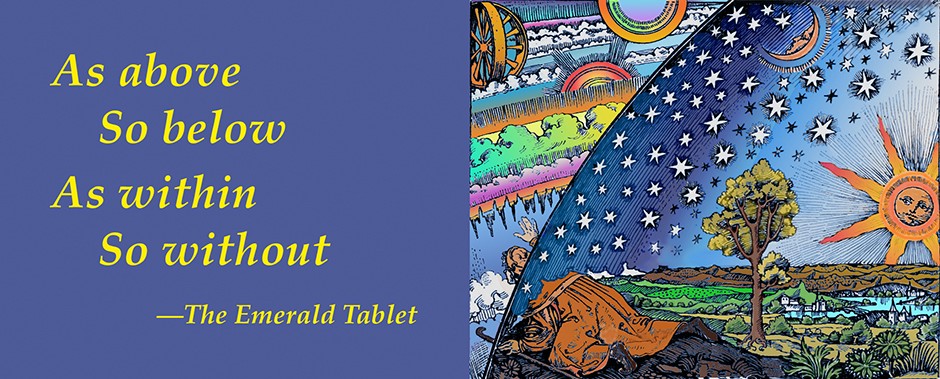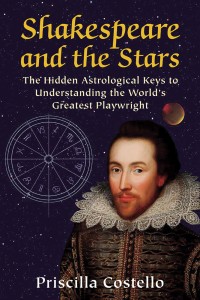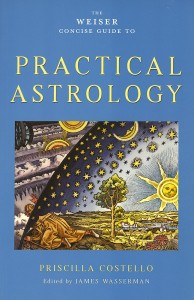• Shakespeare and the Stars: The Secret Astrological Keys to Understanding the World’s Greatest Playwright. (2016) NEW!
IBIS PRESS • 552 pages • 6 x 9 • Paperback • Illustrated • Index • $29.95
This book offers fresh and exciting insights into the ever-popular works of the world’s greatest playwright. It explores six of Shakespeare’s greatest masterpieces through the lens of the Elizabethan worldview, which includes the spheres of the planets with all their myriad associations. This provides a rich language of interlinked symbols lending vitality to his poetic creation. The six plays are A Midsummer Night’s Dream, Romeo and Juliet, The Merchant of Venice, Macbeth, The Tempest, and King Lear.
From the Introduction to the book:
. . . by my prescience
I find my zenith doth depend upon
A most auspicious star, whose influence
If now I court not, but omit, my fortunes
Will ever after droop.
–Prospero (The Tempest)
In Shakespeare’s time, this speech had a meaning entirely missed by modern audiences. Playgoers of his time knew that Prospero’s “most auspicious star” had to be Jupiter, “the greater benefic,” considered throughout western cultural history to be the bringer of success and prosperity. Knowing that Jupiter has a twelve-year cycle (it takes twelve years to circle the Sun as viewed from Earth), his audience got the significance of Prospero’s twelve-year exile on the island; with one revolution of Jupiter completed and another beginning, his luck is about to change.
Modern audiences may be surprised at the frequency of such allusions since astrology has been marginalized in our day, but the audiences of Shakespeare’s time were steeped in its language. This isn’t surprising since people of his time were more aware of the skies and stars than we are: with no electric lights and few clocks, farmers, mariners, and the average Elizabethan looked to the sky to determine time and weather. Since personalities were classified in relation to specific planets (an early form of psychology) and medical practice was based on planetary types (or “temperaments”), the meanings of the astrological symbols were familiar to them.
ASTROLOGY: Shakespeare’s Inspiration
Astrology, the exploration of relationships between human beings and both nature and the cosmos, is a rich and complex symbolic language encompassing all aspects of human experience. Astrology’s essential idea is “connectedness” or “correspondence”. In the ancient worldview from which astrology emerged, everything in the universe is linked in a “great chain of being,” originating in the Divine and unfolding through the realms of the fixed stars and planets into the mundane world. Human beings reflect this cosmic order, with every aspect of our physical and psychic selves resonating with the cosmos.
We don’t catch many of the astrological allusions in Shakespeare’s plays and understand their significance because we’re no longer steeped in the grand worldview that was fundamental to Elizabethan thinking. We’re conditioned in our time by the dominant beliefs of conventional materialistic science: that only physical things are real and that the only way to acquire knowledge is through five-sense perception. But for hundreds of years before Shakespeare’s time the dominant paradigm was of a universe unfolding from Divinity in an orderly progression of hierarchical levels, down through the realm of the fixed stars, through the “crystalline spheres” of the seven classical planets, and ultimately into the physical world of human beings, animals, plants, and minerals.
Each level is linked with all the levels above and below it, so that references to the planets trigger a host of associations on all the other levels. In a worldview in which the heavens are reflected on Earth and the realm of Earth mirrors the heavens, it is natural to see a connection between the glorious Sun that dominates the skies and the King who is the focus of court and country. Shimmering moonlight is symbolically reflected in the sheen of silver. Because this worldview allows for sympathetic resonances between all levels of creation, Shakespeare can write of tempests both external to King Lear and within his mind, of eclipses that portend the fall of kings, and of horses that eat each other when King Duncan is murdered. Events on one level of being can reflect events on another.
Since Shakespeare’s works reflect this generally accepted worldview, the vast majority of his characters’ statements are overwhelmingly in line with the Renaissance astrological worldview familiar to his audience. Shakespeare naturally draws on familiar astrological symbolism as creative inspiration for his art, in both obvious and subtle ways. He uses it for various purposes: to establish time and its passage; to create characters in line with planetary associations; and to allude to themes and philosophical ideas embedded in these symbols.
But there is another much more subtle way in which astrology is fundamental to Shakespeare’s creations. Most of his plays focus on one particular zodiacal sign and its associated ruling planet, with the “key” of the piece being conveyed in several ways: by its title; by the characters and their types; the settings of the play; the events of the plot; and by the language and allusions in the first (or second) scene. Each play then explores profound ideas that are related to each sign and planet. A Midsummer Night’s Dream, for example, is in the “key” of the Moon. References to the Moon abound in this play (more than in any other one) and the Moon even comes on stage as a character in the skit that the Athenian workmen present to the court in Act V.
• The Weiser Concise Guide to Practical Astrology (2008) is a lucid and accessible introduction to the basic principles of modern astrology. Exploring practical, psychological, and philosophical interpretations of astrological symbols, this book reveals the many and multi-level meanings of zodiacal signs, planets, houses, and aspects and gives you the skills to apply them to chart interpretation. It develops sequentially so it is easy to follow, and it leads logically to the practical section that applies the theory to Oprah Winfrey’s horoscope as an example.
Reviews:
“An admirably succinct and accurate guide to the world’s oldest science, this is a superb choice either as a primer for beginners or as a quick reference source for old hands.”
—Richard Smoley, editor of Gnosis, the award-winning journal of the Western spiritual traditions, author of Inner Christianity and The Essential Nostradamus, and current editor of Quest Books.
“Beautifully written, The Weiser Concise Guide to Practical Astrology captures the archetypal essence of each astrological symbol and clearly conveys what is most important to know.”
—Demetra George, author of Astrology and the Authentic Self and Asteroid Goddesses
“. . . a wonderful book, elegantly written, and “a fine introduction to serious astrology and a lovely book for astrologers at all levels of experience to enjoy.”
—Mary Plumb, review in Mountain Astrologer magazine (Dec/Jan 09). The magazine also printed a section from the book on some of the planets in the June/July 09 issue.
ARTICLES/REVIEWS
• “Astrology and Shakespeare, Part I”, on the astrological symbolism fundamental to Romeo and Juliet: see www.uraniatrust.org/lives-of-celebrated- astrologers/astrology-and-shakespeare-part-1.html
• Entries for The Book of Symbols, created by ARAS (the Archive for Research in Archetypal Symbolism, C. G. Jung Foundation of New York City), Tarcher, 2012
• “Ladder to Labyrinth: The Spiritual and Psychological Dimensions of Astrology”, published in Gnosis magazine, No. 38, Winter 1996. Reprinted in The Inner West: An Introduction to the Hidden Wisdom of the West, ed. and intro. By Jay Kinney (Tarcher/Penguin, 2004)
• “Astrology, Religion, and Spirituality”, published in the ISIS Institute Journal, 1995-6
• “The Invisible Becomes Visible”, published by Chiron, the Newsletter of the C. G. Jung Foundation of Ontario, Vol. 4 No. 1, August 1983.


